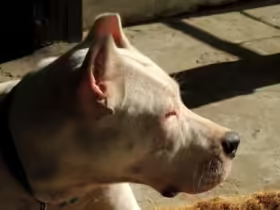Taking your pet out in public spaces can be a wonderful experience for both you and your furry friend. However, it also comes with responsibilities that ensure the safety and comfort of your pet, other animals, and the people around you. Understanding and practicing good pet etiquette is essential for being a responsible dog or cat owner. This guide will provide you with practical tips and detailed advice on how to navigate public spaces with your pet, ensuring a positive experience for everyone involved.
1. Understanding the Importance of Pet Etiquette
Pet etiquette is more than just following rules—it’s about ensuring that your pet is safe, well-behaved, and does not disrupt others. Good pet etiquette helps:
- Promote Safety: Prevent accidents and injuries to your pet, other animals, and people.
- Build a Positive Image: Responsible pet ownership reflects well on you and the broader pet-owning community.
- Enhance Socialization: Proper behavior in public helps your pet develop good social skills.
2. Basic Pet Etiquette Tips for Public Spaces
A. Leash Laws and Control
- Always Use a Leash: Most public spaces require dogs to be on a leash. Even if your dog is well-trained, using a leash keeps your pet under control and prevents unexpected interactions.
- Leash Length: Use a leash that is no longer than 6 feet to maintain control. Avoid retractable leashes in busy areas as they can cause accidents.
- Proper Handling: Keep your pet close to you, especially in crowded places. Be mindful of other people, pets, and potential hazards.
B. Clean Up After Your Pet
- Carry Waste Bags: Always have waste bags on hand to clean up after your dog. Leaving waste behind is not only unsightly but also unsanitary.
- Dispose of Waste Properly: Use designated bins or carry the waste until you can dispose of it responsibly.
- Cat Etiquette: If you are traveling with a cat, make sure to have a portable litter box and clean up any messes immediately.
C. Respect Others’ Space
- Ask Before Approaching: Not everyone is comfortable around pets. Always ask for permission before allowing your pet to approach others.
- Keep Distance: Keep your pet away from others who may be eating, playing, or simply uncomfortable with pets nearby.
- Mind Children: Be particularly cautious around children who may not know how to interact safely with pets.
D. Socialization and Behavior
- Train Your Pet: Basic commands like sit, stay, and come are essential for maintaining control in public.
- Manage Aggressive Behavior: If your pet shows signs of aggression, remove them from the situation immediately and work on training or seek professional help.
- Minimize Disruptions: Prevent excessive barking, whining, or meowing that can disturb others. Practice calming techniques if needed.
3. Specific Etiquette for Different Public Spaces
A. Parks and Green Spaces
- Follow Park Rules: Check if the park allows pets and adhere to specific guidelines such as leash requirements and designated pet areas.
- Designated Pet Areas: Use off-leash areas responsibly if your pet is well-behaved and under control.
- Keep to Pet-Friendly Paths: Stay on paths that allow pets and avoid restricted areas like playgrounds, sports fields, or conservation zones.
B. Dog Parks
- Understand Your Pet’s Personality: Dog parks are great for socialization but not all dogs enjoy them. Make sure your pet is comfortable and well-socialized before visiting.
- Supervise Constantly: Always keep an eye on your dog to ensure they are playing safely and not causing issues with other dogs.
- Prevent Resource Guarding: Avoid bringing toys or treats that could cause possessiveness and conflict with other dogs.
C. Outdoor Cafés and Restaurants
- Check Pet Policies: Not all outdoor dining areas allow pets. Call ahead or look for pet-friendly signs.
- Keep Pets Calm and Close: Ensure your pet stays quietly by your side and does not disrupt other diners.
- Avoid Feeding from the Table: Feeding pets at the table can encourage begging and is generally frowned upon in public dining settings.
D. Beaches and Lakes
- Know the Rules: Some beaches have specific times or areas where pets are allowed. Check local regulations.
- Bring Fresh Water: Saltwater can be harmful if ingested. Provide fresh water to keep your pet hydrated.
- Rinse Off: Rinse your pet after a beach visit to remove sand, salt, and debris.
E. Pet-Friendly Stores
- Keep Control: Keep your pet on a leash and close to you at all times.
- Avoid Unnecessary Touching: Do not allow your pet to sniff or touch items in the store unless they are specifically for pets.
4. Traveling with Pets
A. Public Transport
- Check Transport Rules: Many public transport systems have guidelines for pets. Small pets may need to be in carriers, while larger dogs may need muzzles and leashes.
- Keep Pets Calm: Use a familiar blanket or toy to keep your pet calm during the journey.
B. Car Travel
- Use Car Restraints: Use pet seat belts, carriers, or crates to keep your pet secure and prevent distractions while driving.
- Never Leave Pets Unattended: Never leave your pet alone in a car, especially in extreme temperatures.
5. Safety and Health Considerations
A. Keep Vaccinations Up to Date
- Ensure your pet’s vaccinations are current to protect them and others from infectious diseases. Carry proof of vaccinations if needed.
B. Flea and Tick Prevention
- Regularly treat your pet with flea and tick preventatives, especially when visiting grassy or wooded areas.
C. Microchip and ID Tags
- Make sure your pet has an ID tag with your contact information and is microchipped for easy identification in case they get lost.
6. Handling Unforeseen Situations
A. Dealing with Aggressive Pets
- If another pet becomes aggressive towards yours, calmly remove your pet from the situation. Avoid escalating the conflict.
B. Managing Accidents
- If your pet has an accident indoors, clean it up immediately and thoroughly. Apologize if it affects others.
C. Handling Pet Allergies
- Be aware that some people may have allergies. Keep your pet away from those who indicate discomfort.
7. Educating Others
- Lead by Example: Demonstrate good pet etiquette to encourage others to do the same.
- Share Tips: Share advice with new pet owners on how to handle their pets in public spaces.
Conclusion
Being a responsible pet owner in public spaces means more than just keeping your pet under control—it’s about respecting the environment, other people, and the community as a whole. By practicing good pet etiquette, you ensure that your outings with your dog or cat are enjoyable for everyone involved. Remember, your pet’s behavior reflects on you, so always be prepared, stay aware, and lead with responsibility.
Enjoy your time out and about with your furry friend!











Leave a Reply